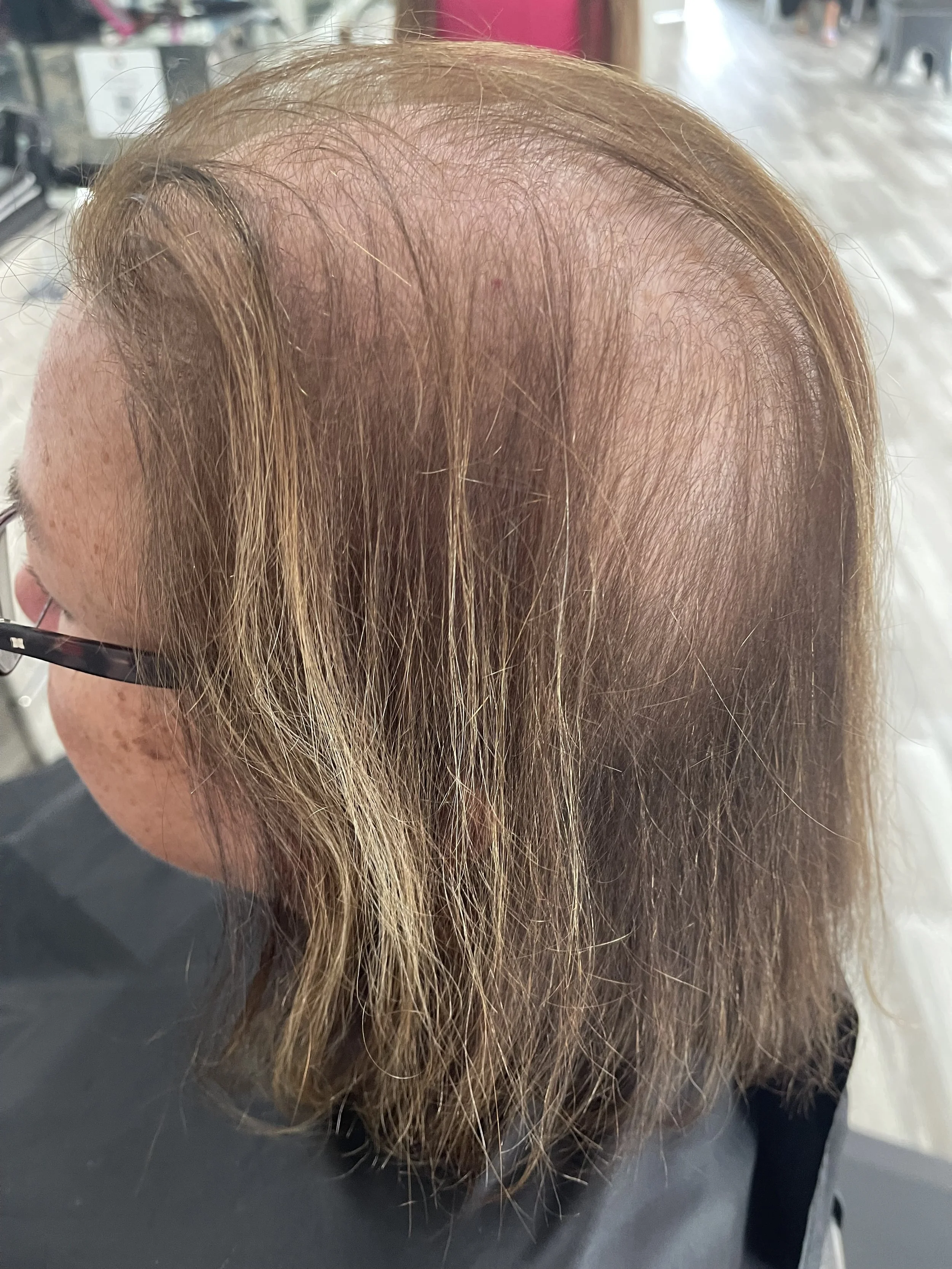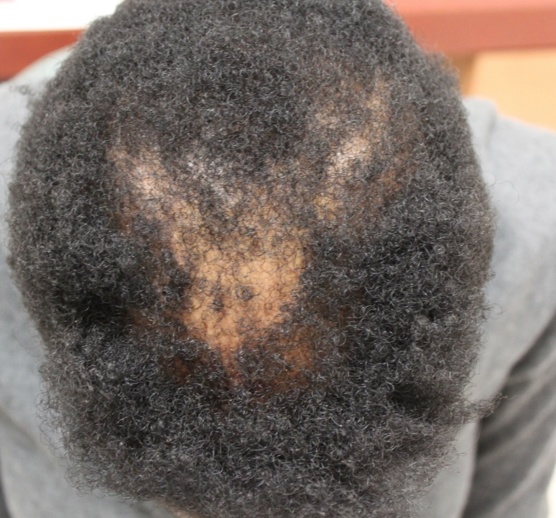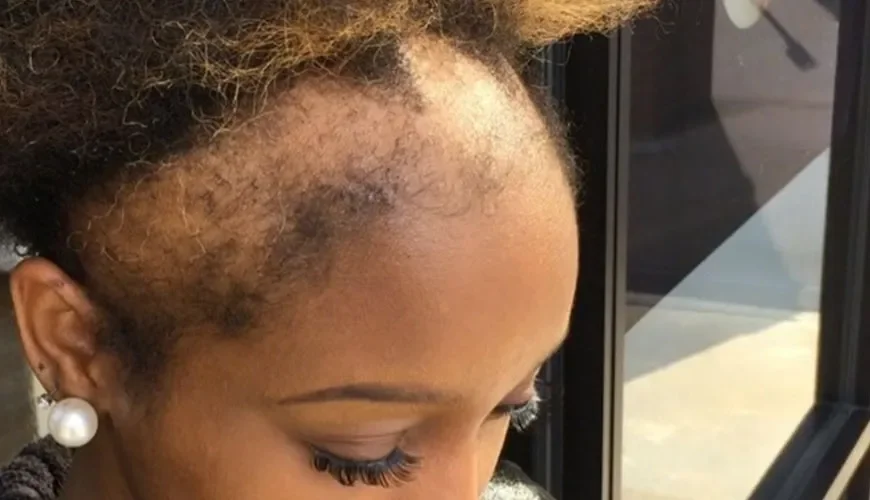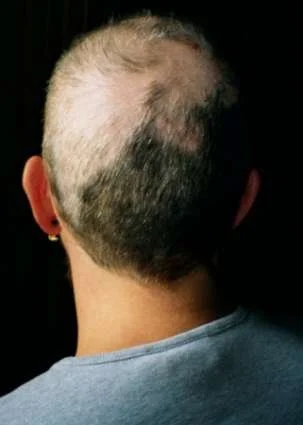
Want to Learn More About the Different Types of Alopecia?
Scroll Down to Read About the Most Common Forms
Types of Alopecia
-

Androgenic Alopecia
AGA is also known as pattern hair loss and is caused by a combination of genetics and hormones. It leads to a progressive shrinking of hair follicles. In women, thinning starts along the part line and can also present as thinning at the temples. Complete baldness is rare.
-

Alopecia Areata
AA is an autoimmune disorder where the body attacks healthy hair follicles. The main symptom is circular, patchy hair loss, usually on the scalp. It can progress to alopecia totalis (complete hair loss on the scalp) or alopecia universalis (total hair loss on the body). Hair can spontaneously regrow and fall out again in cycles.
-

Telogen Effluvium
TE is a temporary condition that is usually caused by an extreme physical or psychological stressor on the body, such as childbirth. It is characterized by diffuse and excessive shedding all over the scalp over a short period of time. TE generally resolves without treatment within 6 months, but it can become a chronic issue.
-

Frontal Fibrosing Alopecia
FFA is a type of scarring alopecia, where the hair follicle is destroyed and replaced with scar tissue. It’s characterized by hair loss across the front of the scalp and along the hairline. Hair loss can also affect the eyebrows. FFA is thought to be caused by a number of things, including an autoimmune reaction, genetics, and hormones (most people with FFA are post-menopausal).
-

CCCA (Scarring Alopecia)
AKA Centrifugal Cicatricial Alopecia, this form of scarring hair loss destroys the hair follicle and replaces it with scar tissue. It starts in the centre of the scalp and slowly spreads outwards. It is characterized by inflammation, itching, and sometimes a shiny, smooth appearance on the scalp. CCCA causes permanent hair loss and is commonly seen in Black women.
-

Lichen Planopilaris
LPP causes inflammation of hair follicles, leading to scarring and permanent hair loss. It often comes with symptoms like itching, burning, and tenderness of the scalp. It primarily affects women between the ages of 40 and 60. Hair loss is generally seen on the top and sides of the scalp. LPP is considered an autoimmune condition.
-

Chemotherapy Induced Alopecia
CIA is hair loss that results from taking chemotherapy drugs, which can damage the cells in hair follicles. It can cause hair thinning or complete loss from the scalp and other parts of the body, including eyelashes and eyebrows. Hair regrowth should occur within 3-6 months of stopping treatment, but hair may grow back with a different texture, colour, or thickness than before.
-

Traction Alopecia
TA is caused by hairstyles that put constant pulling on the hair roots, such as tight braids or ponytails. Symptoms include redness, tenderness, and small bumps on the scalp, especially at the hairline. It can progress to permanent loss if pulling is chronic. Hair loss is most noticeable along the hairline and particularly at the temples.
-

Trichotillomania
Trichotillomania is a mental health disorder characterized by the compulsive urge to pull out one’s own hair. It is classified as an OCD-related disorder and often occurs with anxiety, depression, and other mental health conditions. Hair pulling results in patchy areas of baldness, usually on the scalp, but can also be on the eyebrows, eyelashes, or other body hair.
